Fuel is one of the biggest expenses of running a trucking company. Keeping fuel costs under control and running your trucks as efficiently as possible can reduce your operating expenses, but many carriers watch diesel prices fluctuate and feel like they have little control over this important budget item.
However, driver behavior has a huge impact on your fuel costs, and just because you aren’t on the road with your drivers doesn’t mean you can’t help them improve their efficiency. Software that tracks driving habits and identifies inefficiencies can have a huge impact on your bottom line – but seeing success with a fuel efficiency program requires a product that’s accurate and fair to drivers to earn their buy-in and desire to improve.
Picking the Right Software: Measurement Matters
It’s a natural first step for a carrier to look to a driver’s MPG to assess whether they’re driving efficiently compared to the rest of their fleet. But looking at miles per gallon is like picking up one piece of a puzzle and thinking you’re seeing the entire picture: it’s one data point that isn’t taking into account dozens of other environmental factors.
The best metric a fuel incentive software intended to reduce driver-induced fuel waste from on-the-road behaviors can use is efficiency. Efficiency, as we apply it at Tenstreet, is the quotient of actual MPG divided by potential MPG, which is the MPG the driver could have achieved if the truck was driven perfectly, with no waste. On a scale of 0-100%, efficiency tells a carrier how close each driver is to maximizing their fuel efficiency. The potential MPG measure takes into account factors like traffic, elevation, and weight of the load the driver is hauling, since in reality no two drivers are facing the exact same road conditions and cannot reach the same maximum efficiency.
The result is a metric that’s more accurate and more fair to drivers – making them more willing to buy into a fuel efficiency program and improve their skills.
True Fuel®: Measuring Waste, Improving Behavior
Tenstreet’s True Fuel® is a software solution that uses efficiency as its baseline metric, pairing accurate tracking with reports for drivers and carriers and in-cab audible coaching to indicate areas of improvement. Complete with a built-in, automated program designed to improve driver engagement and incentivize safe driving practices, True Fuel® integrates with safety and telematics or the Driver Pulse app. These integrations provide carriers with a complete view of driver performance and drivers with a fun and engaging way to earn rewards.
We offer three tiers of service, including a FREE solution that leverages our Driver Pulse app, a technology most drivers already have on their phones. Fleets using True Fuel® see a 3-10% improvement in their fuel economy starting immediately after deployment – so every carrier can start seeing savings regardless of how efficient their fleet is at the beginning.
Read on to hear how two different carriers found success with True Fuel® and what you can learn from their examples about starting a successful fuel efficiency program.
Crossett Inc.: Ambitious Goals and Immediate Savings
Crossett’s management team had a tall order to fill when strategizing how to improve their fleet’s fuel efficiency. They were looking to reduce overall fuel spend while focusing on what drivers could control, such as how they shift their trucks, idle time, and use of cruise control. They needed both the drivers and the management team to be mindful of fuel loss and also hoped to improve safety and wear and tear on vehicles. Finally, they also needed a way to provide insights and information to drivers and managers during one-on-one coaching.
Crossett began using True Fuel® through an integration with Geotab that made the software available to drivers through the hardware already installed in their trucks, making the rollout across the fleet easy to complete.
Knowing their own operational needs, Crossett decided to start by focusing on True Fuel®’s data-rich reports, having managers use the tool’s actionable fuel analytics and a monthly scorecard to coach drivers directly.
After assessing their drivers’ fuel performance and the fleet’s opportunity for improvement, Crossett decided to implement an incentive program with its terminal managers. The goal for the first 3 months was to get the fleet’s efficiency to 93% from its starting point of 91%.
Crossett’s program incentivized driver managers and, with True Fuel®, enabled them to provide coaching to drivers who had the highest fuel waste. This program improved low-performing drivers who had the most waste that could be recouped while also providing its top drivers with positive reinforcement for the great job they were doing.
The results spoke for themselves: Crossett leaped past the 93% mark they had set and were above 94% efficiency by the end of the 3-month period. From this improvement, Crossett saved 5,823 gallons of fuel. With the national diesel cost at the time around $4.00 a gallon, that equated to around $23,290 in savings. The number of drivers who achieved an efficiency score above 94% jumped from 37 to 87. Drivers cut their total waste from 13.02 gallons per 1,000 miles down to 8.96. The Crossett team made truly impressive improvements in a short period of time.
The Takeaway: Carriers can see huge improvements in efficiency and cost savings right away once they implement coaching and technology that can help drivers improve their technique. Investments in greater efficiency pay for themselves in the short term and continue to reward carriers with savings in the long term.
Valley Farms and Larry Gardner: One Driver’s Improved Shifting and Fuel Savings
Larry Gardner, a tractor-trailer driver for Valley Farms who covers 300 miles daily making direct store deliveries of fresh milk in eastern Pennsylvania, was interested in improving his fuel efficiency and sought out coaching from his manager.
Recognizing the company could optimize the fuel economy of its fleet by working more closely with drivers like Larry, Valley Farms started looking for a tool to provide real-time coaching to improve idling, shifting, and speed control behaviors. Soon after, the carrier began installing True Fuel® in its trucks to reduce fuel consumption and cost.
Using True Fuel® to improve his shifting technique, Larry raised his fuel efficiency score from 88% to 99.99% over 60,000 miles during an 8-month period. The savings he generated for Valley Farms averaged 1,400 gallons annually, lowering the fleet’s fuel cost by more than $4,000. To test that the truck Larry was driving was configured correctly because of how much more fuel-efficient he was than his peers, Valley Farms switched the tractor he was operating for another unit and found that he was equally efficient – the vehicle was not a factor.
With True Fuel® in the entire Valley Farms fleet, which travels 1.3 million miles annually, the company realized overall savings of 10% to 12% in fuel use. Across the operation, the carrier reported that drivers steadily improved their efficiency scores with others approaching Larry’s near-perfect performance. With those savings, Valley Farms realized a return on its investment in True Fuel® in less than one year.
The Takeaway: Let your superstar drivers be your biggest advocates. Drivers who want to improve their skills will welcome the opportunities for coaching, and their achievements can motivate the rest of your fleet to do better through competitions, rewards programs, and bonuses.
Getting Started with True Fuel®
If you’re not already using True Fuel® to save money on fuel, the best time to get started saving is today. Click the button below to sign up for a demo.
To hear more stories about how True Fuel® has helped carriers of all sizes save money and run more efficiently, check out our case studies page.



